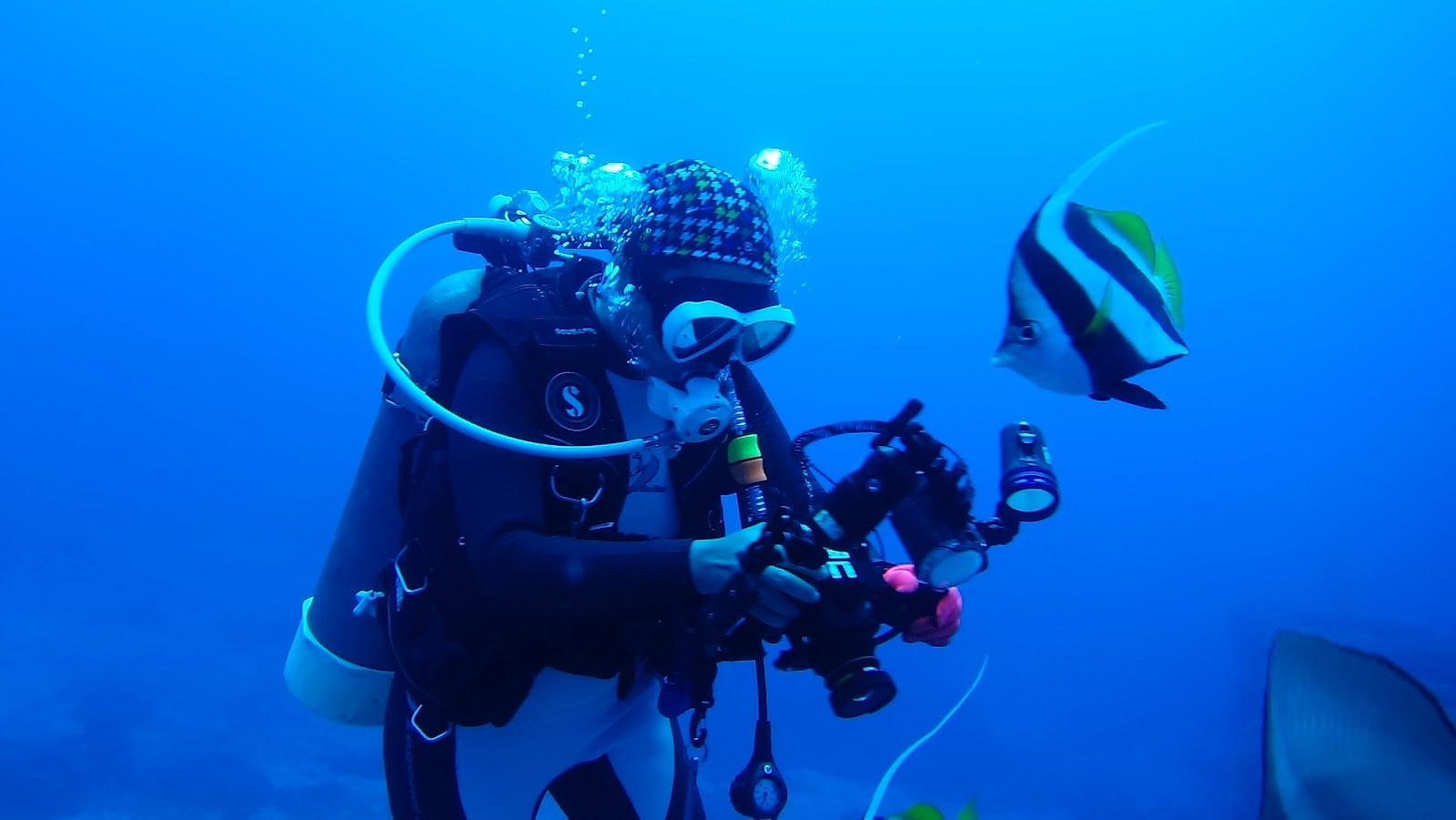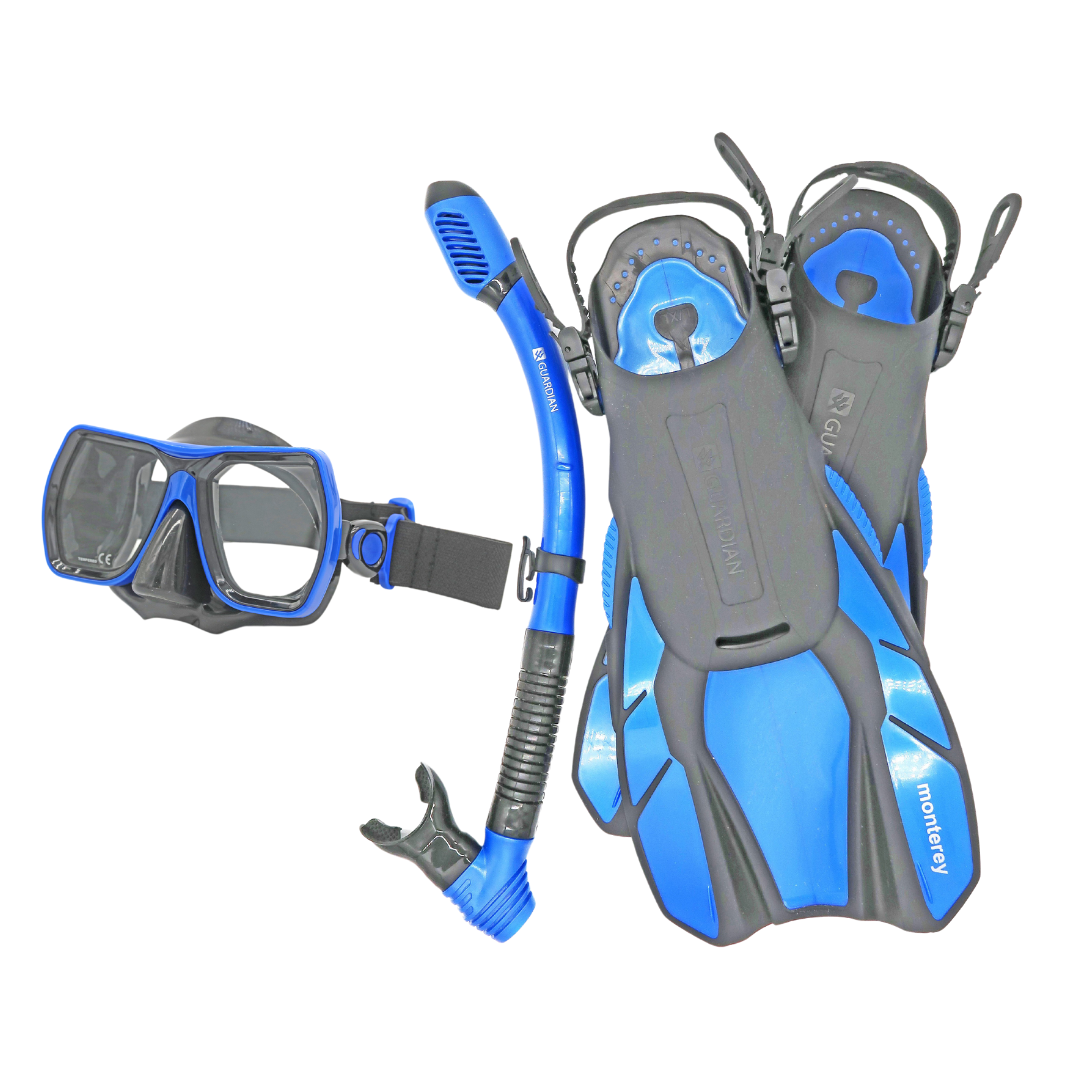Exploring the underwater world through scuba diving can be an out of this world experience. For many, the experience of diving is exhilarating and freeing. However, venturing into the aquatic realm demands more than just enthusiasm, it requires the right scuba diving equipment.
Selecting the appropriate gear ensures your safety, comfort, and performance underwater, making it a vital aspect of the diving experience. From the essential scuba diving set to advanced gear for seasoned divers, each piece plays a vital role in ensuring a safe and enjoyable dive.
Equipping yourself with the right gear isn’t just about ticking off a checklist; it allows you to breathe, move, see, and remain safe during your dive. Whether you're a beginner diving in tropical waters or an experienced diver exploring deep wrecks, different diving environments and skill levels require tailored gear, and knowing what to choose can transform your underwater adventures.
Let’s dive into the essentials and explore everything you need to know about scuba diving equipment.
The Core of Scuba Diving Gear
A scuba diving set is the foundation of every diver’s underwater experience. Each component plays a vital role in ensuring a safe and enjoyable dive. Let’s explore these core elements in detail:
- Scuba Diving Tank (Oxygen Cylinder)
The scuba diving tank is arguably the most critical piece of equipment. It's the heart of your gear. This tank stores compressed air, allowing divers to breathe underwater. Tanks are available in various sizes and capacities to suit various diving needs.
- Standard Tanks: These typically hold compressed air and they are perfect for shallow to moderate depths.
- Specialty Tanks: Designed for more advanced diving, they may contain enriched air (Nitrox) or other gas mixtures to extend dive times and allow for deeper descents.
The material of the tank is another consideration. Aluminum tanks are lightweight and ideal for casual divers, while steel tanks are more durable and preferred for technical diving. Proper maintenance, including regular inspections and servicing, ensures the longevity and reliability of your tank.
2. Scuba Diving Tank (Oxygen Cylinder)
The scuba diving regulator complements the tank by converting the high-pressure air inside the tank into breathable air at ambient pressure. Without a regulator, accessing the air supply in your tank would be impossible.
- First Stage: Connects to the tank and reduces the high-pressure air to an intermediate pressure.
- Second Stage: Delivers air to the diver at a breathable pressure.
Some advanced regulators offer adjustable airflow and integrated gauges, which are beneficial for managing air supply and ensuring comfort during extended dives. Choosing a high-quality regulator is non-negotiable, as it directly impacts your breathing underwater.
-
Scuba Diving Mask
Your scuba diving mask is essential for clear vision underwater. Unlike regular goggles scuba diving, masks create an air pocket that allows light to refract properly, enabling you to see clearly.
- Fit and Seal: A well-fitting mask prevents water leakage and ensures comfort.
- Lens Options: Single-lens masks offer a wide field of view, while dual-lens masks are compatible with scuba diving prescription mask inserts for divers with vision impairments.
-
Additional Features: Some masks come with purge valves for easy water clearance and anti-fog coatings for enhanced visibility.
Investing in a high-quality mask tailored to your needs can significantly improve your diving experience, allowing you to fully appreciate the underwater world.
-
Scuba Diving Fins (Flippers)
Scuba diving fins are essential for efficient movement underwater. They allow divers to glide effortlessly, conserving energy and enhancing control. The right pair of fins can make a significant difference in your overall performance underwater.
Types of Fins:
- Full-Foot Fins: Ideal for warm water and recreational diving. They are lightweight and easy to use.
- Open-Heel Fins: These are versatile and adjustable, making them suitable for colder waters or technical dives. They are worn with booties for added protection.
Blade vs. Split Fins:
- Blade Fins: Offer power and control, making them suitable for technical diving.
- Split Fins: Provide efficiency and reduce resistance, ideal for long recreational dives.
-
Buoyancy Control Device (BCD)
The buoyancy control device is essential for maintaining neutral buoyancy underwater. It allows you to ascend, descend, or hover effortlessly by adjusting the amount of air in the device.
-
Integrated Features: Most BCDs come with integrated weight pockets, making them more comfortable and streamlined compared to traditional weight belts.
-
Fit and Comfort: A properly fitting BCD ensures freedom of movement and stability, which is crucial for both recreational and technical diving.
By mastering the use of your BCD, you can conserve energy, improve control, and reduce stress during your dive.
Specialized Scuba Diving Equipment
Beyond the core gear, there are specialized items tailored for specific diving needs.
- Scuba Diving Full Face Mask: A scuba diving full face mask offers integrated communication systems and added protection, making it a valuable choice for professional or technical divers.
- Scuba Diving Helmet: Similarly, a scuba diving helmet may be required for specific environments, such as industrial or deep-sea diving
-
Scuba Diving Dry Suit vs. Wet Suit: The debate between a scuba diving dry suit and a scuba diving wet suit often arises when choosing gear for different water temperatures. A scuba diving dry suit is designed for colder conditions, keeping the body entirely dry and warm. A wet suit offers flexibility and comfort in warmer conditions.
Understanding the diving environment will help you select the right suit for maximum comfort and safety.

Accessories to Enhance Your Dive
-
Scuba Diving Accessories:
Dive Computers: Track depth, time, and decompression limits to ensure safe diving parameters.
- Underwater Lights: Essential for night dives or exploring darker environments like caves.
- Knives and Slates: Serve as tools for communication or safety in emergencies.
-
Scuba Diving Clothes:
-
Scuba Diving Shirts and Shoes: Provide protection and comfort, shielding you from abrasions, sun exposure, or cold.
-
Thermal Layers and Rash Guards: Allow divers to adapt to varying water temperatures without compromising mobility
-
Air Compressor for Scuba Diving:
Managing your equipment at home becomes easier with an air compressor scuba diving setup. It allows you to refill tanks and maintain gear, offering convenience for frequent divers despite the initial investment.
Advanced Equipment for Experienced Divers
As you advance in your diving skills, upgrading to advanced scuba diving products can elevate your underwater experience.
- Underwater Scooters: These allow divers to cover greater distances with minimal effort, making long or challenging dives more manageable.
- High-Quality Underwater Cameras: Capture the stunning beauty of marine life and preserve memories of your dives with advanced cameras designed for underwater use.
- Specialized Suits and Gear: Tailored for technical or cave diving, these open up opportunities for more challenging and rewarding underwater adventures.
Each piece of advanced gear is designed to improve performance and safety, ensuring you focus on the dive itself rather than equipment limitations. As you explore new environments or take on more complex dives, investing in advanced equipment becomes a critical step in your diving journey.
Scuba diving is an activity where equipment is more than just a tool, it’s a lifeline. Choosing the right scuba diving equipment is about ensuring safety - and elevating your entire diving experience. Whether it’s a reliable scuba diving mask, comfortable fins, or a well-maintained scuba diving tank, every piece of gear contributes to your overall comfort and performance underwater. As you gain experience, you can explore more advanced tools and accessories that match your growing expertise.
Investing in high-quality equipment tailored to your specific needs is one of the best ways to make your underwater adventures enjoyable and secure. Research your options, consult professionals, and don’t hesitate to invest in high-quality gear that will enhance your enjoyment and exploration beneath the waves.

